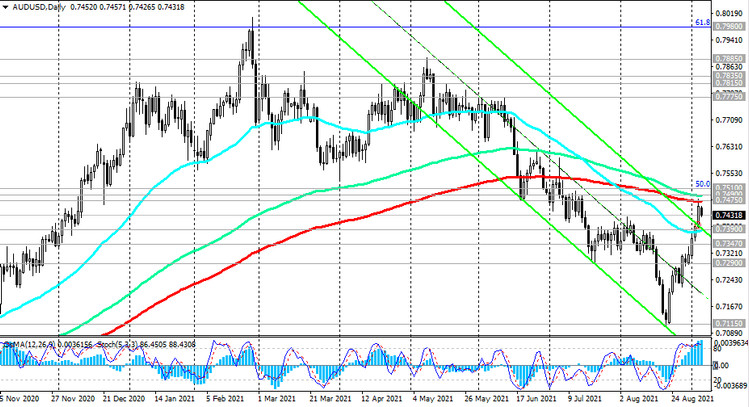The dollar fell sharply last Friday after the publication of contradictory data from the US Department of Labor, closing last week also in negative territory. As reported last Friday in the US Department of Labor, the number of jobs outside agriculture in the country in August rose by 235,000, and the unemployment rate fell to 5.2%. Thus, the growth in the number of jobs in August was much lower than the forecast and indicators of July, when 1.1 million jobs were created, and June, when the number of jobs increased by 962,000.
It looks like employers have sharply reduced the rate of hiring new workers amid the new wave of Covid-19 triggered by the delta strain of the coronavirus. It is also possible that the unemployed, fearful of contracting Covid-19, have decided not to return to the labor market until the virus recedes.
In fact, the September Labor Department report (with data for August) confirms the Fed's concerns about the country's economic and labor market recovery due to threats from the ongoing spread of the coronavirus.
Back in the middle of last month, the head of the Fed, Jerome Powell, said that it is not yet known how the US economy will survive the recent rise in incidence. He also indicated that the restoration is not over yet. "The Covid pandemic is still affecting economic activity. We still feel it to a great extent. You see, we cannot declare victory yet", he said.
Now, according to many market participants and economists, the sharp increase in the number of cases of Covid-19 infection recently in the United States has the most negative impact on the recovery of the country's labor market (as can be seen from the report of the Ministry of Labor) and may force the Fed to delay making a decision on curtailing asset purchases.
Nevertheless, the opinions of economists and market participants on this matter were divided. Still, a significant number of them believe that, based on the continued improvement in the labor market, albeit at a slower pace in August, the Fed is likely to report on the pace of the forthcoming stimulus reduction at the November meeting. In their opinion, the Fed's plans can change only if the data on the labor market in September and October also turn out to be disappointing.
If we follow this logic, then the decline in the dollar index DXY observed in the past and previous weeks should stop near the current levels. Then it becomes clear observed (at the moment and since the beginning of the trading day) the strengthening of the dollar. Although, on the other hand, this often happens after the publication of the NFP, when market participants fix profits (or losses) after a strong fluctuation in the dollar quotes when the report is published or considering a decrease (or growth) in the dollar excessive.
As of this writing, DXY dollar futures are traded near 92.27 mark, 47 points above the local 9-week low of 91.80 reached late last week.
Key US stock index futures have also been on the rise since the start of the trading day, maintaining a positive momentum.
Today the USA is celebrating Labor Day. Banks and stock exchanges of the country are closed, trading volumes during the American trading session will be low. The publication of important macro statistics is also not planned. In view of this, the current trend of strengthening the dollar and the growth of US stock indices is likely to continue until the end of today's trading day.
However, volatility will return to the markets tomorrow morning, when the data on China's trade balance will be published and at 04:30 (GMT), when the RB of Australia will publish its decision on the interest rate.
The AUD / USD pair has grown quite strongly during the previous 2 weeks, primarily due to the weakening of the US dollar. At the time of publication of this article, AUD / USD is traded near 0.7432 mark, just below the key resistance levels of 0.7475, 0.7490, 0.7510, a breakout of which could lead to further growth of the pair and its return to a bullish long-term market.

AUD also got support earlier this month from Australian Bureau of Statistics data that showed Australian GDP in Q2 grew +0.7% (vs. +0.5% forecast) and +9.6% YoY (against the forecast +9.2%). The data, which indicated that Australia's economy grew faster than expected in the 2nd quarter, eased fears of a recession and raised the likelihood of a cut in RBA monetary stimulus (a quantitative easing program has been underway since late 2020, helping Australia's economic recovery). The central bank believes that with the abolition of lockdowns, costs will begin to grow to such an extent that economic growth will quickly recover and will reach pre-crisis levels in 2022. However, there is almost no guarantee that growth will recover quickly. In some parts of Australia, it has not yet been possible to contain the spread of the virus. This may predetermine the decision of the RBA at its meeting tomorrow not to change the parameters of the current monetary policy and not to begin to reduce stimulus, which could cause a weakening of the AUD and a fall in the AUD / USD pair.





